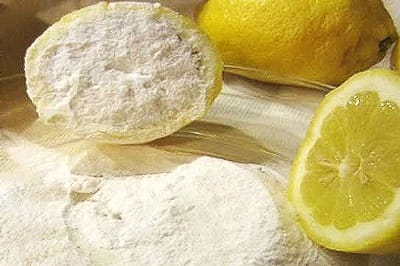Pernem’s Dussehra wedding
Rajendra P Kerkar | TNN | Sep 24, 2017, 13:33 IST
For most Goans, there are two terms that instantly spring to mind at the mention of Pernem - 'Pednemchi' Konkani, its distinct dialect of Konkani, and the 'Pednemchi Punav', its Dussehra celebration.
For most parts of the year the pace of life at the headquarters of Pernem taluka is sleepy; that is until Navratri rolls in. Then, the region bustles with festive activity as Pednekars living in other parts of the state flock back to their roots to pay their obeisance to the Bhagavati deity of Pernem.
"Dussehra is among the biggest events for the people of the taluka. No matter where they live, they return home to seek blessings of their folk deities," says Vithoba Bagali, a teacher from Agarwada.
The largest numbers arrive from Maharashtra and Karnataka, say locals.
Navratri is observed on the first nine nights of Ashwin, the seventh month of the Hindu calendar, which usually falls in October or November.
At the centre of the celebration is the deity Bhagavati, considered the mother goddess of the region, and her male counterpart, Ravalnath.
"For seven days, the marriage ceremony between the insignias of the deities Bhagavati and Ravalnath, known as the 'Shivlagna', is observed. The celebration emphasizes the male and female union for procreation," says a local.
There are various rituals performed during these seven days.
Boiled rice mixed with the blood of two roosters and an egg is offered to the insignias. At this point, the persons carrying the insignias are believed to go into a trance and they then give their blessings to devotees.
In the temple, goddess Bhagavati is depicted in the form of a sixteen-handed goddess killing the buffalo demon Mahishasur. In each hand, she hold a different weapon and in one, a bell.
The Ravalnath idol is a four-handed one. He is shown holding a trident, kettle drum and bowl.
There is a third deity, the Bhutnath, who does not have any temple structure dedicated to him. It is said he occupies the ruins of an old temple believed to have been built by the Pandavas.
"Belief has it that devotees are required to build a temple for him within a night. Every year, for Dussehra, assembled devotees assure the deity that they will build him a temple," a local said.
On the ninth day of Ashwin, the deities Bhagavati and Ravalnath are taken out in a palanquin procession. And the following day, on Vijayadashmi, people exchange leaves of the Apta tree, which are symbolic of gold.
Late evening, the insignia of Ravalnath, dressed in 22 sarees and that of Bhutnath, in 21 sarees, are taken out in procession known as 'tarang'.
Festivities in Pernem come to an end with Kojagiri Pournima, the full
moon night.
For most parts of the year the pace of life at the headquarters of Pernem taluka is sleepy; that is until Navratri rolls in. Then, the region bustles with festive activity as Pednekars living in other parts of the state flock back to their roots to pay their obeisance to the Bhagavati deity of Pernem.
"Dussehra is among the biggest events for the people of the taluka. No matter where they live, they return home to seek blessings of their folk deities," says Vithoba Bagali, a teacher from Agarwada.
The largest numbers arrive from Maharashtra and Karnataka, say locals.
Navratri is observed on the first nine nights of Ashwin, the seventh month of the Hindu calendar, which usually falls in October or November.
At the centre of the celebration is the deity Bhagavati, considered the mother goddess of the region, and her male counterpart, Ravalnath.
"For seven days, the marriage ceremony between the insignias of the deities Bhagavati and Ravalnath, known as the 'Shivlagna', is observed. The celebration emphasizes the male and female union for procreation," says a local.
There are various rituals performed during these seven days.
Boiled rice mixed with the blood of two roosters and an egg is offered to the insignias. At this point, the persons carrying the insignias are believed to go into a trance and they then give their blessings to devotees.
In the temple, goddess Bhagavati is depicted in the form of a sixteen-handed goddess killing the buffalo demon Mahishasur. In each hand, she hold a different weapon and in one, a bell.
The Ravalnath idol is a four-handed one. He is shown holding a trident, kettle drum and bowl.
There is a third deity, the Bhutnath, who does not have any temple structure dedicated to him. It is said he occupies the ruins of an old temple believed to have been built by the Pandavas.
"Belief has it that devotees are required to build a temple for him within a night. Every year, for Dussehra, assembled devotees assure the deity that they will build him a temple," a local said.
On the ninth day of Ashwin, the deities Bhagavati and Ravalnath are taken out in a palanquin procession. And the following day, on Vijayadashmi, people exchange leaves of the Apta tree, which are symbolic of gold.
Late evening, the insignia of Ravalnath, dressed in 22 sarees and that of Bhutnath, in 21 sarees, are taken out in procession known as 'tarang'.
Festivities in Pernem come to an end with Kojagiri Pournima, the full
moon night.
Get latest news & live updates on the go on your pc with News App. Download The Times of India news app for your device.
From around the web
More from The Times of India
From the Web
More From The Times of India
- These actors have unbelievable bank balances.Fropky.com

- How To Fix Dark SpotsGundry MD

- 2017 Lincoln Navigator. Put Power And Comfort At Your Com..Yahoo Search

- Going on a Trip? Got Get Caught Without Health CoverageUnited Healthcare

- Afraid Of Falling Short In Retirement? This Guy Isn't, And..Wealthyretirement.com








































All Comments ()+^ Back to Top
Refrain from posting comments that are obscene, defamatory or inflammatory, and do not indulge in personal attacks, name calling or inciting hatred against any community. Help us delete comments that do not follow these guidelines by marking them offensive. Let's work together to keep the conversation civil.
HIDE